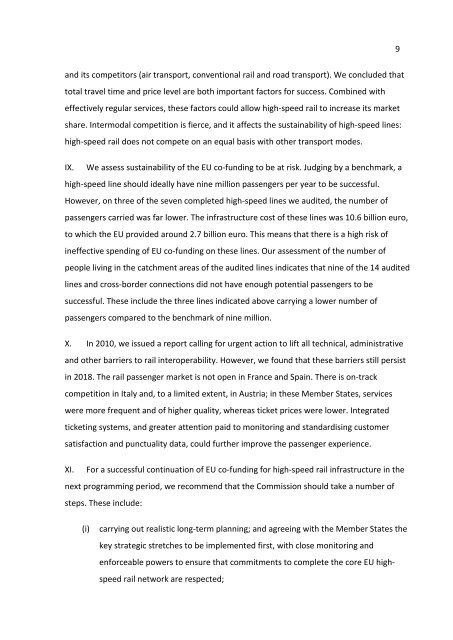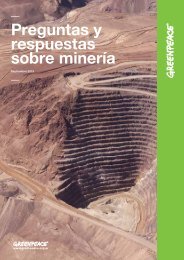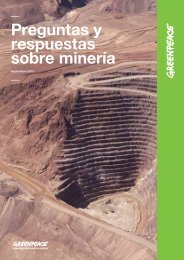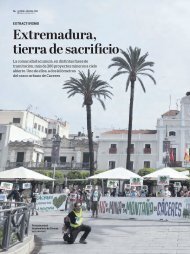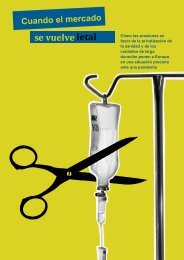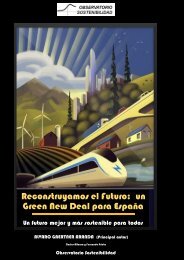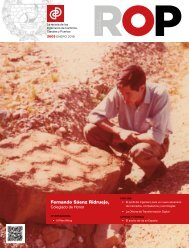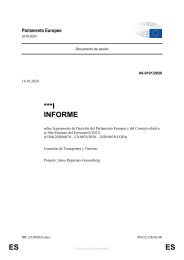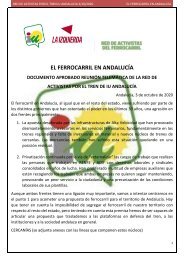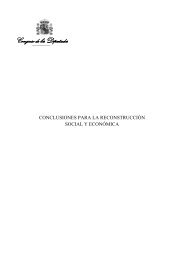La Red de Alta Velocidad Europea: Más un mosaico poco efectivo que una realidad
El presente comunicado de prensa tiene por objeto ofrecer una síntesis del contenido esencial del informe especial del Tribunal de Cuentas Europeo. El texto íntegro del informe puede consultarse en www.eca.europa.eu.
El presente comunicado de prensa tiene por objeto ofrecer una síntesis del contenido esencial del informe especial del
Tribunal de Cuentas Europeo.
El texto íntegro del informe puede consultarse en www.eca.europa.eu.
You also want an ePaper? Increase the reach of your titles
YUMPU automatically turns print PDFs into web optimized ePapers that Google loves.
9<br />
and its competitors (air transport, conventional rail and road transport). We conclu<strong>de</strong>d that<br />
total travel time and price level are both important factors for success. Combined with<br />
effectively regular services, these factors could allow high-speed rail to increase its market<br />
share. Intermodal competition is fierce, and it affects the sustainability of high-speed lines:<br />
high-speed rail does not compete on an equal basis with other transport mo<strong>de</strong>s.<br />
IX. We assess sustainability of the EU co-f<strong>un</strong>ding to be at risk. Judging by a benchmark, a<br />
high-speed line should i<strong>de</strong>ally have nine million passengers per year to be successful.<br />
However, on three of the seven completed high-speed lines we audited, the number of<br />
passengers carried was far lower. The infrastructure cost of these lines was 10.6 billion euro,<br />
to which the EU provi<strong>de</strong>d aro<strong>un</strong>d 2.7 billion euro. This means that there is a high risk of<br />
ineffective spending of EU co-f<strong>un</strong>ding on these lines. Our assessment of the number of<br />
people living in the catchment areas of the audited lines indicates that nine of the 14 audited<br />
lines and cross-bor<strong>de</strong>r connections did not have enough potential passengers to be<br />
successful. These inclu<strong>de</strong> the three lines indicated above carrying a lower number of<br />
passengers compared to the benchmark of nine million.<br />
X. In 2010, we issued a report calling for urgent action to lift all technical, administrative<br />
and other barriers to rail interoperability. However, we fo<strong>un</strong>d that these barriers still persist<br />
in 2018. The rail passenger market is not open in France and Spain. There is on-track<br />
competition in Italy and, to a limited extent, in Austria; in these Member States, services<br />
were more fre<strong>que</strong>nt and of higher quality, whereas ticket prices were lower. Integrated<br />
ticketing systems, and greater attention paid to monitoring and standardising customer<br />
satisfaction and p<strong>un</strong>ctuality data, could further improve the passenger experience.<br />
XI. For a successful continuation of EU co-f<strong>un</strong>ding for high-speed rail infrastructure in the<br />
next programming period, we recommend that the Commission should take a number of<br />
steps. These inclu<strong>de</strong>:<br />
(i)<br />
carrying out realistic long-term planning; and agreeing with the Member States the<br />
key strategic stretches to be implemented first, with close monitoring and<br />
enforceable powers to ensure that commitments to complete the core EU highspeed<br />
rail network are respected;


